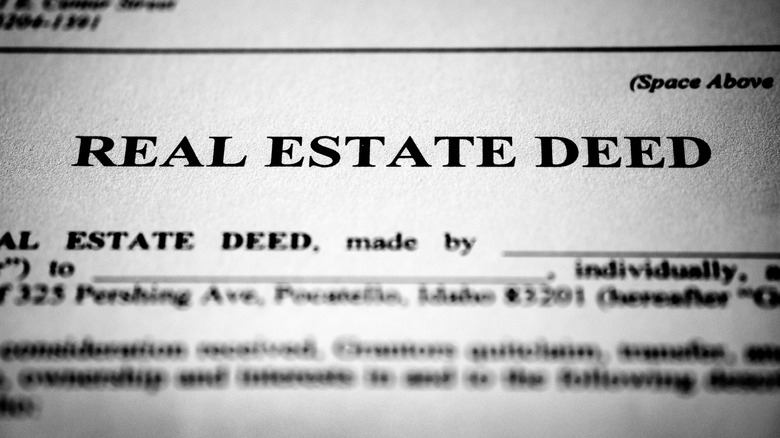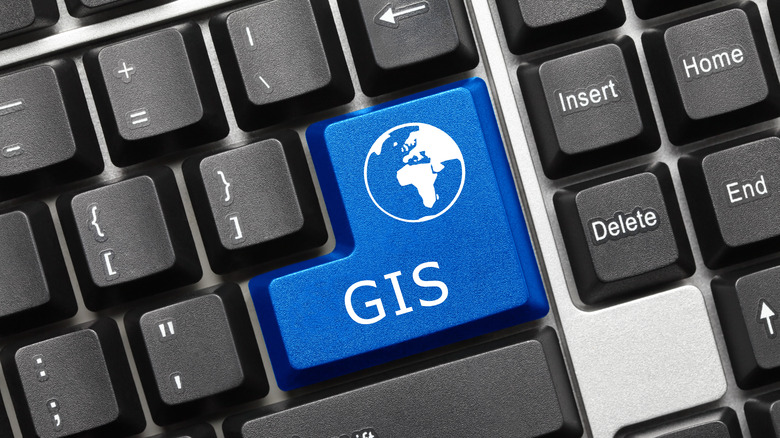Finding Your Home's Property Lines Is Easier Than You Think
Imagine you're a homeowner wanting to start an exterior renovation project in your home's backyard. Maybe you want to install an in-ground swimming pool, a perimeter fence, or other prominent landscaping features. Before you can buy materials or even schedule a professional consultation, two questions arise: Exactly how big is your yard? And how can you determine where your yard ends, and your neighbor's begins?
Property lines paint an exact picture of the land you are entitled to as a homeowner. As the official legal boundaries of your dwelling, property lines also help you purchase a home in the first place since mortgage lenders will typically refrain from offering buyers a loan until they confirm the amount of acreage that comes with the purchase. Regardless of your plans for your home, learning where your property lines are located is important. Here are five free and simple ways to do so.
Check for physical markers
Before turning to the internet or other publicly accessible resources, search your yard for indicators of your property's official boundaries. Property lines are often marked off using wooden or metal stakes, initially placed to divide parcels of land available for purchase. Since professional land surveyors usually place these markers, their readings are generally assumed to be accurate. But it wouldn't hurt to peruse official records or consult an expert to receive a more solid, conclusive estimation of property line locations.
Some surveyors will also bury invisible metal pins near property boundaries when initially dividing the land. However, the placement of these markers should also be taken with a grain of salt because they're often moved or displaced entirely by tree removers or utility workers. Homeowners can locate these underground pins with the assistance of a metal detector, and they are typically found near sidewalks or curbs around the house.
Find your property deed
The official deed to your property can serve as another source for locating property lines, which is an official document detailing basic information about your home. A deed differs from a homeowner's title; however, a title in real estate confirms a homebuyer's property ownership. In contrast, a deed documents the characteristics of the property itself. It's important to keep in mind that a deed will only describe a property's potential boundaries rather than provide exact measurements indicating a property's size. Because of this, deeds are not the most reliable documents to consider when locating property lines.
So, if you live in a home that is decades or even generations old, it may be reasonable to assume that any information regarding property lines on the document is outdated or completely inaccurate. The physical landmarks once used to identify property boundaries may not exist anymore, or lines may have been redrawn since the home was first constructed. Homeowners can access property deeds online or at their county recorder's office.
Consult public records
Homeowners can also analyze property line maps, or plats, to find their home's partitions. These maps, unlike deeds, give you the exact dimensions of the land that came with the purchase of your house, thus making them extremely useful when tracking down property lines. Plats factor environmental characteristics into your property's placement, including bodies of water, elevation, and other notable structures. Plats also visualize your home in tandem with the properties around you, giving you a more conclusive picture of the boundaries separating your land from your neighbors.
Most homeowners receive a copy of their property line map after closing on their homes. However, if you never received one, your local zoning department or county assessor's office should have a copy of this document. Since plats usually feature the properties of an entire neighborhood, you could also ask a neighbor for a copy of their property line map to borrow to get the information you need.
Scour the internet
Some examples of public records are also available online at taxpayers' convenience, like digital copies of property line maps. To access plat maps online, visit your county assessor's website and filter through the provided database to find your desired home. While each county's website may be designed differently, the databases usually feature the same categories that are relatively easy to navigate. Type in the home address you want to find property lines for, and sift through available photos and maps that pop up during your search. Geographical Information Systems (GIS) maps can also be found on privately-owned websites that can be accessed with a simple Google search.
Other popular web tools that users can use are Google Earth and Google Maps. While Google Maps is perhaps best known for providing navigable street-level satellite imagery, the application can also display property lines for homes across select regions. Type the address into the site's search bar and zoom in to view the boundaries of your property. However, Google Maps doesn't display property lines for all its locations, so don't be discouraged if this method doesn't work for you.
Property line apps
At the height of the digital media age, it may feel like there's an app to satiate every want and need. Apps for surveying property lines certainly exist, and consistently-advancing technology makes it easier for consumers to uncover detailed information about their homes. Using your smart device's camera and AR technology, the Homesnap app, for example, can find your property lines just by walking around the perimeter of your house. Other apps even feature GPS access for homeowners to locate property lines themselves. Once again, the generated results from these applications will rarely be as accurate as the findings of a hired professional.
Some applications have advanced features that can only be accessed with a paid subscription. One app, LandGlide, features parcel information for over 150 million records, covering around 95% of the country's population. Users will need to pay for a monthly or yearly subscription after the app's seven-day free trial runs out. The app versions of Google Maps and Google Earth might be useful alternatives to finding property lines, which are free to download and use.





